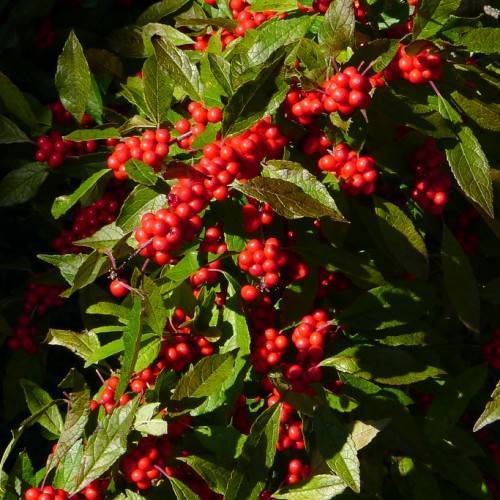
winterberry
Ilex verticillata 'Winter Red'
Cycle:
Perennial
Watering:
Frequent
Hardiness Zone:
3 - 9
Flowers:
Flowers
Sun:
Full sun,part shade
Fruits:
Fruits Ready In Winter
Edible:
Yes
Leaf:
Yes
Growth Rate:
Low
Maintenance:
Low
Drought Tolerant:
Yes
Salt Tolerant:
Yes
Thorny:
Yes
Care Level:
Medium
watering
Winterberry (Ilex verticillata 'Winter Red') can thrive with moderate watering. Water the plant when the top 2 to 3 inches of soil feels dry to the touch. Depending on where you live, this would probably mean watering once every 7 to 10 days. In particularly hot and dry climates, however, you may need to water a bit more frequently (every 5-7 days). During periods of very hot weather, you can water more often to make sure your Winterberry isn't getting too dry. It's also important to water deeply to ensure that the entire root system is getting sufficient moisture.
sunlight
Winterberry (Ilex verticillata 'Winter Red') is a vigorous, deciduous shrub that grows best in full sun. It should ideally receive at least 6 hours of direct sunlight per day, but it can tolerate some afternoon shade in areas with hot summers. For best results, place Winterberry in an area that offers its foliage direct exposure to the sun in the morning and midday, then provide some afternoon shade as the sun shifts across the sky.
pruning
Prune winterberry (Ilex verticillata 'Winter Red') in late winter or early spring for the healthiest growth and best berry production. Start off by removing all dead, diseased, or otherwise damaged branches, then continue by thinning the branches from the center to create an open canopy. For best results, prune just a few canes at a time and shape the plant so that the air can circulate more freely, which helps prevent disease and pests. Make sure to leave 2 to 3 buds on each cane for new growth and to never prune more than 1-third of the total plant.
